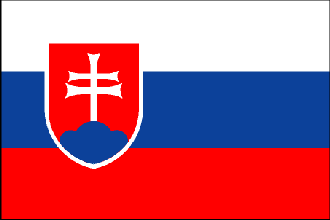
|
Slovakia
Background:
In 1918 the Slovaks joined the closely related Czechs to form Czechoslovakia.
Following the chaos of World War II, Czechoslovakia became a Communist nation
within Soviet-ruled Eastern Europe. Soviet influence collapsed in 1989 and
Czechoslovakia once more became free. The Slovaks and the Czechs agreed to
separate peacefully on 1 January 1993. Historic, political, and geographic
factors have caused Slovakia to experience more difficulty in developing a
modern market economy than some of its Central European neighbors.
|

Climate and Terrain:
Climate: Temperate; cool summers; cold, cloudy, humid winters.
Terrain: Rugged mountains in the central and northern part and lowlands in the
south.
|
|
|
Economy overview:
Slovakia has mastered much of the difficult transition from a centrally planned
economy to a modern market economy. The Dzurinda government made excellent
progress in 2001 in macroeconomic stabilization and structural reform. Major
privatizations are nearly complete, the banking sector is almost completely in
foreign hands, and foreign investment has picked up. Slovakia's economy
exceeded expectations in 2001, despite recession in key export markets.
GDP - composition by sector: Agriculture: 4%, industry: 32%, services: 64%.
|
|